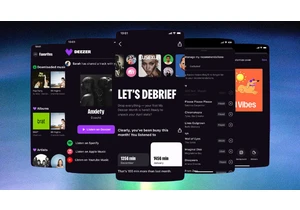Software increasingly makes the world go round. Without this critical digital infrastructure, the economy—and society at large—wouldn’t function.
But as recent events like last year’s CrowdStrike outage have shown, enormous leaps in software power and complexity, including the integration of AI into the development process, ratchet up the potential for things to go sideways, fast.
How can software teams better harness the supercharged new tools at their disposal? Here’s a look at five things that lie ahead.
1. As consumers lose patience with outages, developers make software more resilient
For consumers, the CrowdStrike outage is just the tip of the iceberg. Other recent software disruptions include American Airlines’ holiday stoppage, the global shutdown of Meta’s apps, and a Microsoft 365 failure.
When we commissioned a survey of U.S. consumers in 2024, their resentment was palpable. More than half had been impacted by software outages. And for 70%, releasing “bad” code is equal to—or even worse than—supermarkets selling contaminated food. Business leaders are worried too. When asked late last year, almost 90% of global executives expected major IT outages in 2025.
The irony is these outages aren’t the result of hackers or security compromises—they’re due to preventable glitches and oversights in the development process itself.
The way out of this mess? Moving forward, more companies will fully embrace modern DevOps practices—tools and processes that make software delivery more reliable and efficient. An emerging discipline just a few years ago, DevOps is quickly becoming table stakes across industries.
The most crucial safeguard: automating the software development pipeline. If every engineer must follow the same steps for planning, writing, testing, deploying, and maintaining code, the entire process is smoother, faster, and safer.
2. AI transcends the hype
Roughly 60% of developers deployed AI in 2024, up almost 20% from the previous year. But so far, we haven’t seen the expected AI productivity gains. That will change going forward.
As software teams figure out how to operationalize AI, the technology will start to show its real value. After all, AI’s role in the development lifecycle goes well beyond writing code.
Developers now have access to AI-native software delivery platforms that weave AI agents into every stage of the development process, not just coding.
For example, a DevOps assistant lets software teams instantly create pipelines—and easily modify them.
3. Security threats (and responses)
While invaluable to developers, AI has also been a boon to hackers. For instance, state-backed actors from China, Russia, and Iran have been using OpenAI tools to sharpen their skills and deceive targets. Indeed, the majority of hackers agree that businesses adopting AI have created new attack vectors.
One vulnerability increasingly exploited: APIs, the doors and windows into code that allow apps to “talk” to each other. In the past two years, 57% of organizations were hit by an API security breach. And in a survey we conducted, more than two-thirds of businesses said genAI poses a risk to API security.
For companies, fighting back requires taking stock of APIs and detecting and preventing attacks. The key steps: conducting an API inventory, ensuring that APIs meet specific security standards, and using smart tools to spot threats.
Equally important: integrating security into the developer pipeline. This so-called “shift left” isn’t new—progressive companies have been working for years to get developers in on the ground floor of security initiatives. But we’ll see shift left strengthen—part of a broader effort to close the gap between Dev and functions like FinOps and continuous integration/continuous delivery.
4. DevOps platforms offer developers a one-stop shop
As DevOps matures, a significant problem has surfaced: too many tools.
Point solutions, handy tools and automations that make developers’ lives easier, are starting to overwhelm them. They add to daily toil instead of alleviating it. Currently, the average developer is asked to manage 14 different vendor tools. This context shifting between different interfaces, workflows, and licenses leads to confusion, cognitive overload, and development inconsistency.
This all points to the need for a robust, integrated platform bringing the needed developer tools into one place. Critically, however, all the solutions need to be best of breed. Developers aren’t forgiving and would rather build their own tools than use inferior ones.
For all these reasons, expect platform engineering to go mainstream this year. Indeed, Forrester predicts that in 2025, half of enterprises will abandon individual software tools for DevOps platforms.
5. Cloud costs tools become mission-critical
For developers, getting a handle on cloud services costs has always been a headache. AI has taken that frustration to a whole new level.
Because the latest AI applications use so much processing power, cloud costs can quickly escalate, leading to huge surprise bills. For the average business, cloud spending has leaped 30% in the past year, largely because of generative AI.
That’s one reason why FinOps—another emerging discipline that bridges the gap between finance and engineering—is increasingly important. With developer visibility into cloud spending and accountability for it, companies should see significant savings and efficiency gains.
But that hinges on new tech and on harnessing AI as part of the solution. AI-powered tools let anyone easily pinpoint cloud waste by asking questions in plain language. Armed with that knowledge, developers can get recommendations on the right fixes.
The best cloud cost management tools also automate fixes, forecast cloud spend, and enforce rules for cloud usage. The result is significant savings—as much as 50% at Fortune 1000 companies I know.
For software developers, big opportunities lie ahead, along with growing threats. Teams that stay vigilant and take advantage of the best tools will be better positioned to see real productivity gains from AI while avoiding the security and quality pitfalls.
Jyoti Bansal is CEO of Harness.
The Fast Company Impact Council is a private membership community of influential leaders, experts, executives, and entrepreneurs who share their insights with our audience. Members pay annual membership dues for access to peer learning and thought leadership opportunities, events and more.
Accedi per aggiungere un commento
Altri post in questo gruppo

Instagram has begun testing AI-powered technology designed to proactively identify accounts it suspects belong to teens—even if the user has listed an adult birthdate—and place them under special

Behind the curtain of generative AI breakthroughs and GPU hype, a quieter transformation is taking place. Data center architecture and its prowess have become a fierce battleground as AI models ex

Amid the video podcast boom, Netflix is making its own move into the space.

If real Easter eggs aren’t your thing this weekend, you may find hunting for digital ones more enjoyable. And there are some cool ones to find at your fingertips, provided you have an iPhone or Ma

With music streaming, users have gotten used to being at the mercy of algorithms. But French music streamer Deezer is making it easier for its subscribers to make the algorithm work for them.

Trying to get from point A to point B? If only it were that simple! With any manner of travel these days, you’ve got options: planes, trains, buses, ferries, and beyond. And finding the best

When Twitter cofounder and Medium founder Evan “Ev” Williams was planning his 50th birthday party, he didn’t know who to invite. Having spent more of his life building and scaling tech
